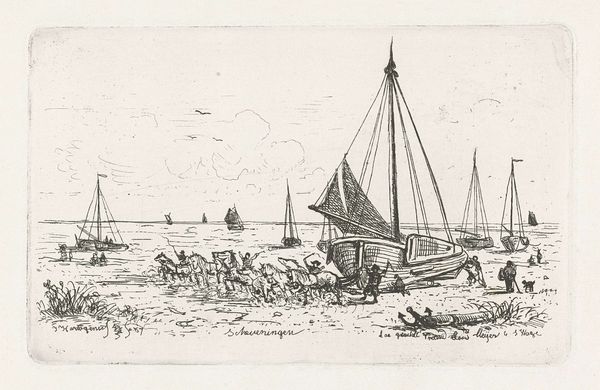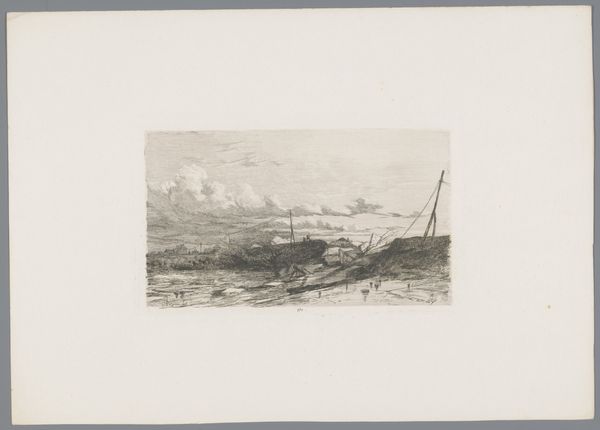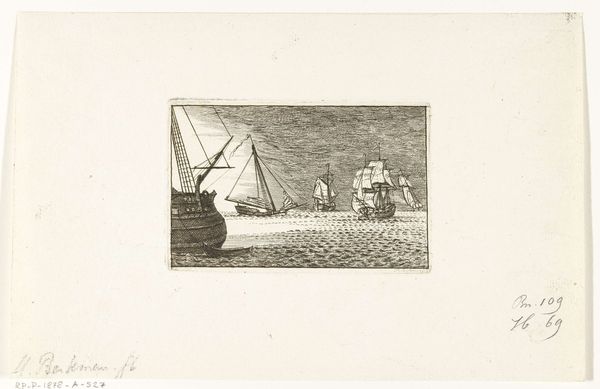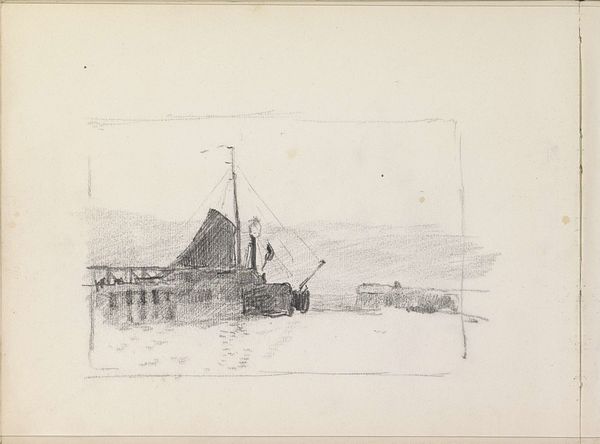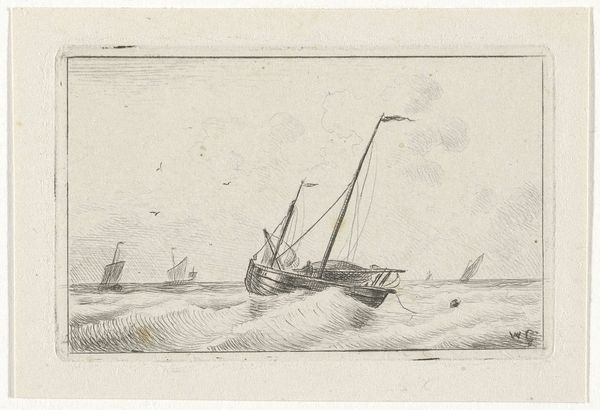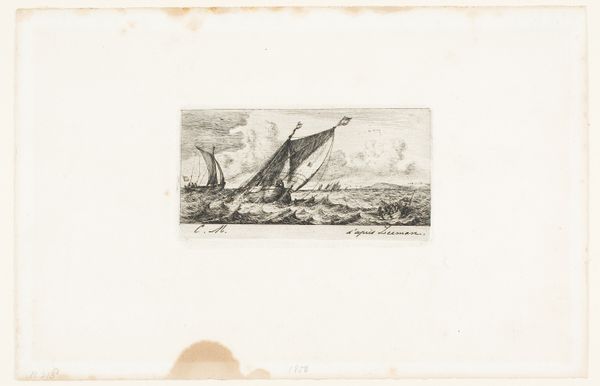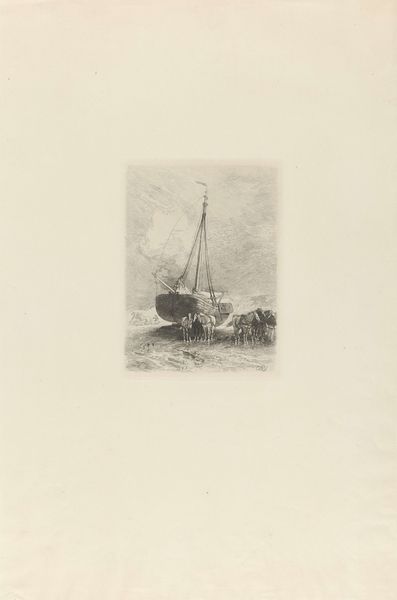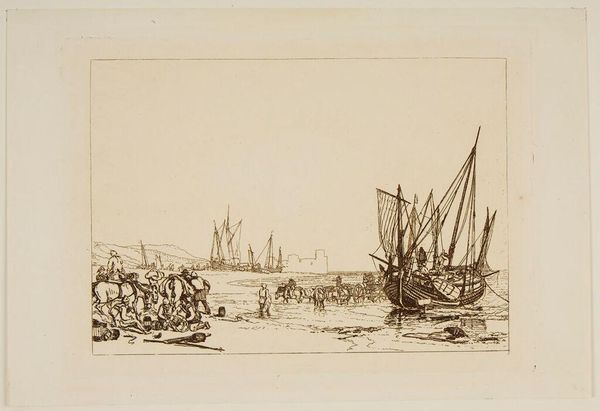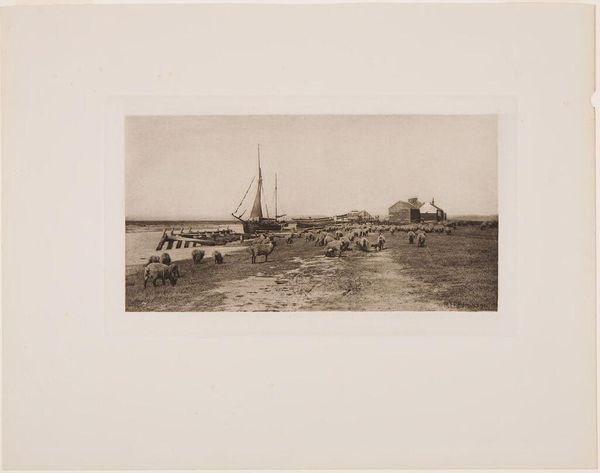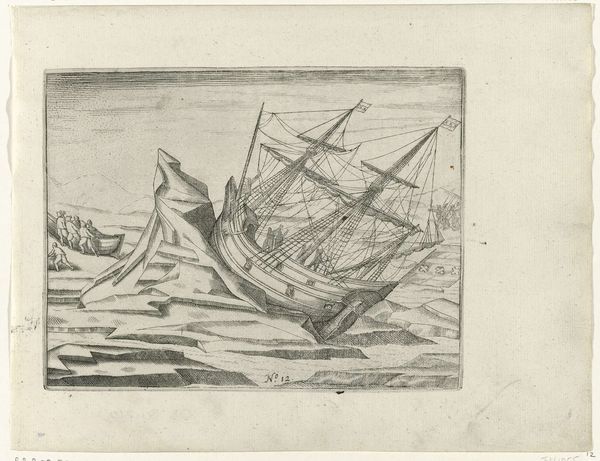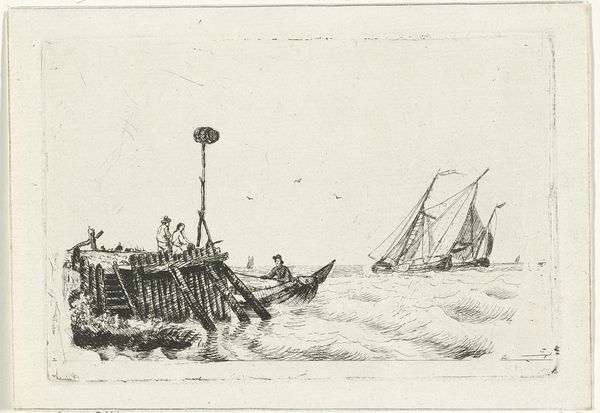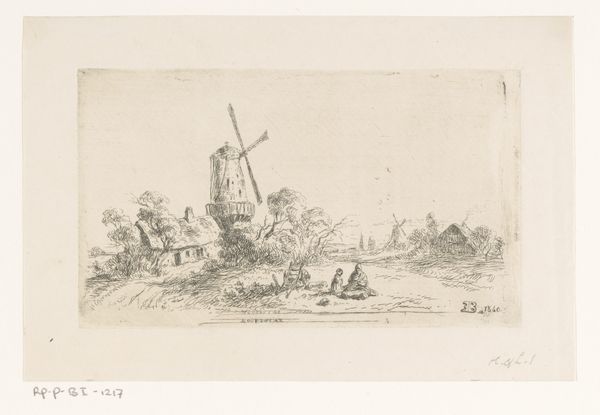
drawing, print, etching, ink, engraving
#
drawing
# print
#
etching
#
old engraving style
#
landscape
#
figuration
#
ink
#
pen-ink sketch
#
line
#
sketchbook drawing
#
genre-painting
#
engraving
#
realism
Dimensions: height 56 mm, width 72 mm
Copyright: Rijks Museum: Open Domain
Curator: Welcome. Here we see a drawing, etching, and engraving in ink by Joseph Hartogensis, sometime between 1837 and 1865, called "Ship with Cargo on a Shore," held here at the Rijksmuseum. Editor: There's an immediate earthiness to this. It feels less like high-seas adventure and more like everyday toil by the water. The crosshatching really emphasizes the weight of the materials depicted. Curator: Note how Hartogensis uses line work and figuration to suggest not just labor, but the enduring connection between land, sea, and humanity. The vessel seems to be more integrated into the landscape than distinct from it, implying a symbiosis. What do you see there? Editor: The boat itself interests me. It's not just about transporting goods, but it represents a whole economy dependent on its construction and maintenance. The lines aren't delicate; they're solid, evoking the tangible efforts of shipbuilding. And consider those loads, seemingly peat blocks, how much collective manual effort does it take to stack and load them! Curator: Indeed. Consider then, the potential layers of cultural symbolism embedded in those materials. Peat, in the 19th century Netherlands, speaks to home heating and the domestic sphere. The scene connects the viewers with their history, while evoking something almost ancestral. Editor: That's an interesting reading. But what of its use as a commodity? Peat fuelled not only homes but industries. I can't overlook how its extraction altered landscapes and its trade shaped local economies. Its value comes at an environmental cost, even in this seemingly benign image. Curator: Both aspects converge, I'd say, revealing a subtle narrative about the interconnectedness of necessity, work, and the environment. The visual language and that raw material evoke continuity between the domestic and larger social concerns. It almost asks if the value placed is sustainable. Editor: Right, but look beyond its artistic merit, and consider its place within the networks of commerce, shaping markets, supporting labour. Curator: We see then, two ships carrying cargo on different waters. Thank you for considering this work with us. Editor: It's been a great opportunity to think about art as both an image and evidence of real labour.
Comments
No comments
Be the first to comment and join the conversation on the ultimate creative platform.
